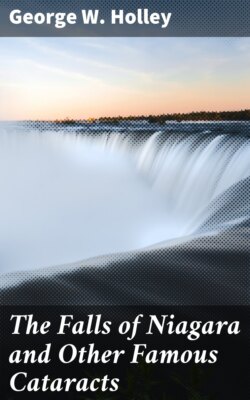Читать книгу The Falls of Niagara and Other Famous Cataracts - George W. Holley - Страница 7
На сайте Литреса книга снята с продажи.
CHAPTER III.
ОглавлениеTable of Contents
The name Niagara—The musical dialect of the Hurons—Niagara one of the oldest of Indian names—Description of the river, the Falls, and the surrounding country.
There is in some words a mystic power which it is not easy to analyze or define; they fascinate the ear even of those who do not understand their meaning. The very sound of them as they are enunciated by the human voice touches a chord to which the heart instinctively responds. So it is with the name of the great cataract. No one can hear it correctly pronounced without being charmed with its rhythmical beauty, or without feeling confident of its poetical aptness and significance in the dialect from which it was derived.
And although we have no means of determining the correctness of any of the fanciful or poetical interpretations which have been given of the word, still we cannot doubt that it must have had a peculiar force and justness with those who first applied it. Baron La Hontan, who spent several years among the Indians, noticed the remarkable fact concerning their language that it had no labials. "Nevertheless," he says, "the language of the Hurons appears very beautiful, and the sound of it perfectly charming, although, in speaking it, they never close their lips."
The most voluminous and among the earliest existing records connected with the River St. Lawrence, and the great lakes which it drains, are the well-known "Relations of the Jesuits," so called, comprising a yearly account of the labors of the Missionary Fathers sent out by the College at Paris to Christianize the Indians. In 1615, they established their mission at Quebec, and from thence extended their operations westward. In 1626, they reached the large and powerful tribe of Indians which occupied the splendid domain which may be described with proximate accuracy as bounded by a line commencing at a point on the southerly shore of Lake Ontario, about thirty miles west of the mouth of the Genesee River, and running thence parallel to that river to a point due west from Avon; thence nearly due west to Buffalo; thence along the north shore of Lake Erie to the Detroit River; thence up that river to a point directly west from the west end of Lake Ontario; thence east to that lake, and finally along the southern shore of it to the place of beginning.
The oldest and most notable name in all this territory is Niagara, as would naturally be inferred, when we consider the varied and wonderful features of the mighty river which flows across this country. Taking leave of Lake Erie, its clear waters gradually spread themselves out in a broad, bright channel, over a plain, open country, having a slight declivity, just sufficient to make a gentle current, thereby adding the living beauty and force of motion to the broad expanse of a lake-like surface, that surface itself diversified and relieved by the pleasant islands, large and small, which are scattered over it. Eddying into every quiet bay, coquetting with every salient angle, moving to the melody of its own murmurs, it flows on serenely and musically.
But after a time this holiday journey is interrupted. A fearful change takes place. The careless waters are hurried down a long and sharp descent, over the rough, denuded, bowlder-studded bed-rock of the stream. Breaking and bounding, surging and resurging, flashing and foaming, rushing fiercely upon some huge bowlder, recoiling an instant, then madly leaping entirely over it, rushing on to others huger still, then breaking wildly around them, the troubled waters hurry on until, culminating in their sublimest aspect, they plunge sheer downward in the grandest of cataracts.
And now the scene and the effect it produces on the beholder both change. The rapids are beautiful; the falls are grand; those are exhilarating, these are inspiring; those are noisy, turbulent, fickle; these are calm, resistless, inexorable.
After the water has made the final plunge over the precipice the cataract acquires its most impressive characteristics; the majestic monotone, the bow, the cloud, which is its veil by night, its crowning glory and beauty by day. The combinations of grandeur and beauty have reached their climax in the fall, the foam, the voice, the spray, the bow.
